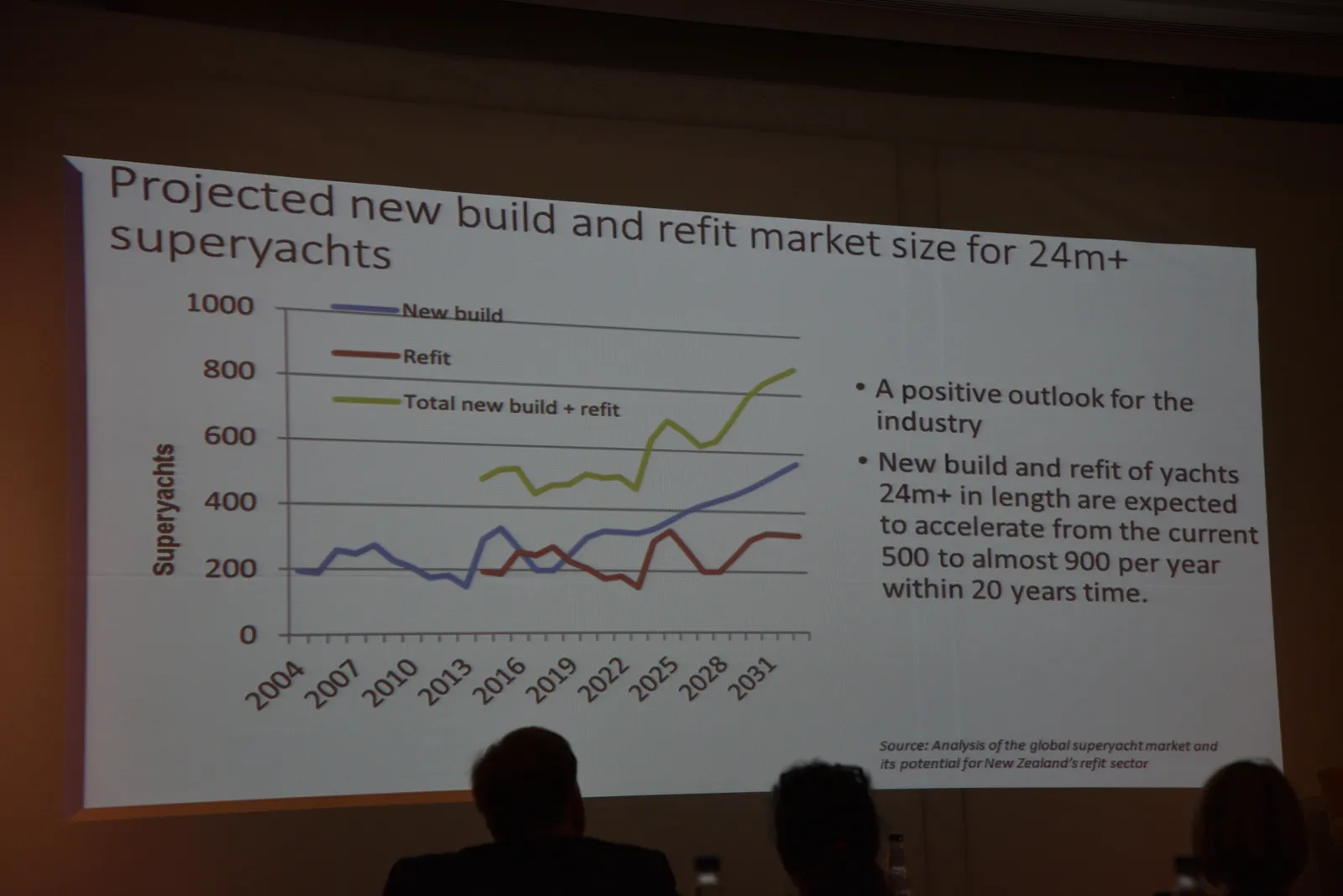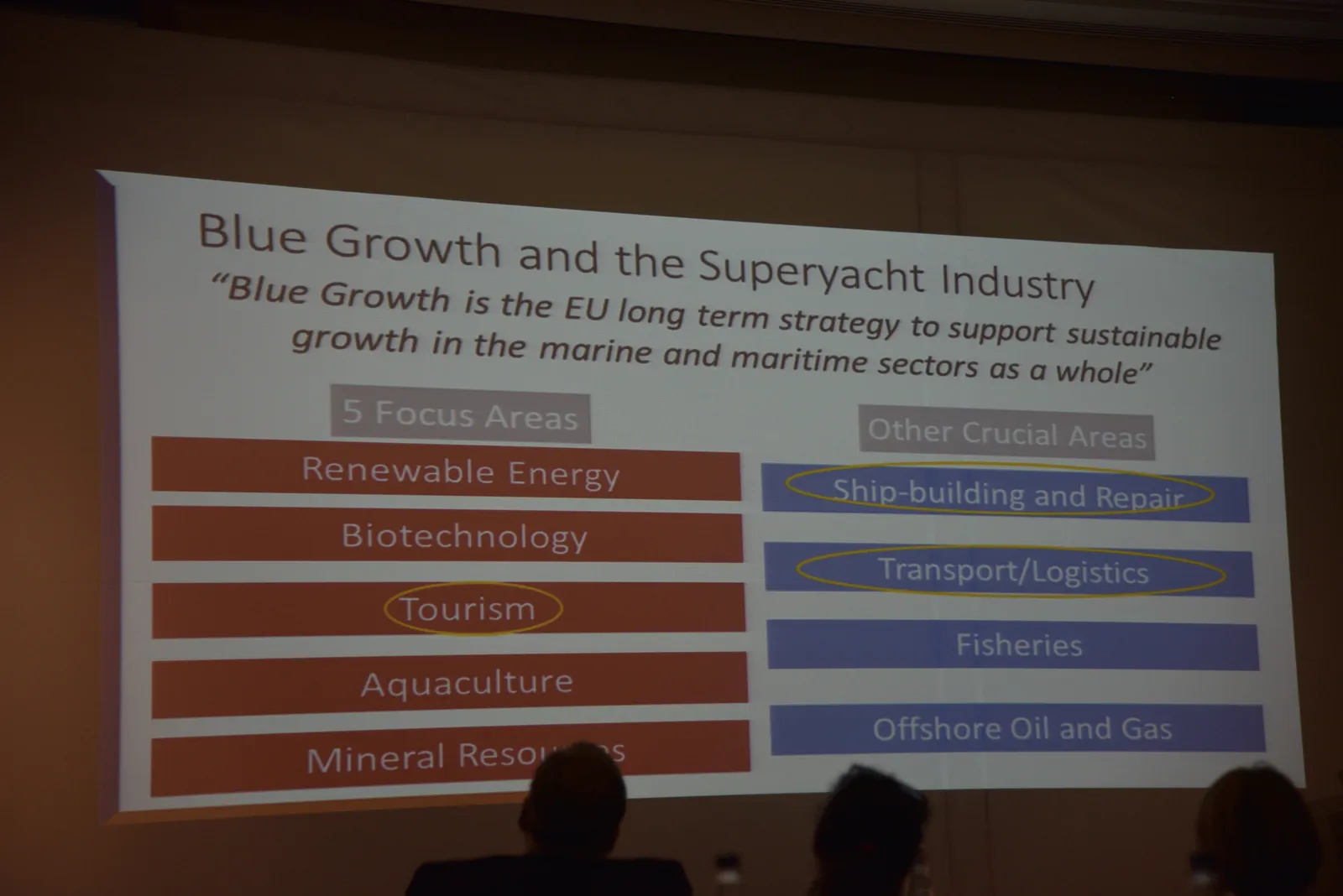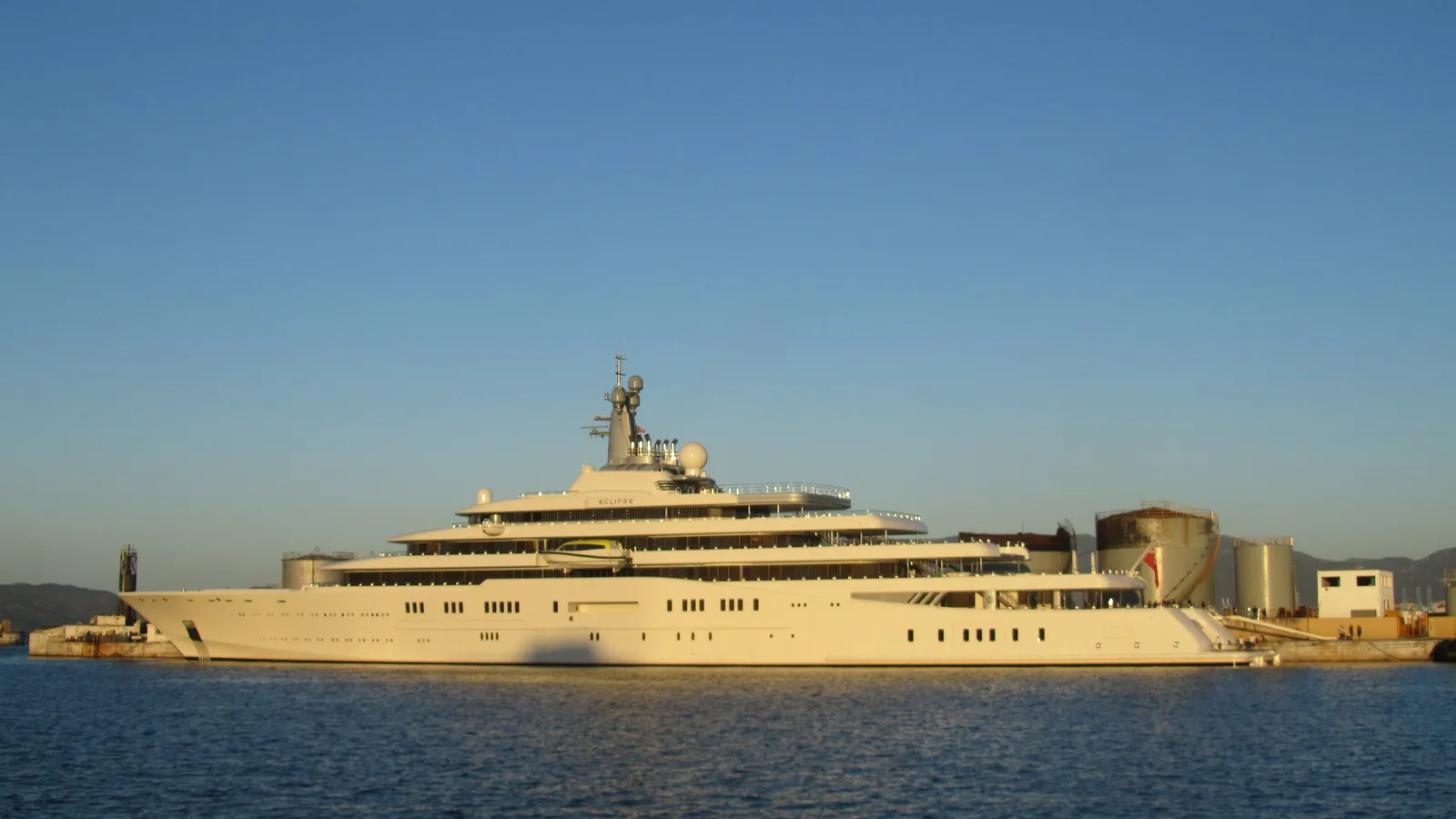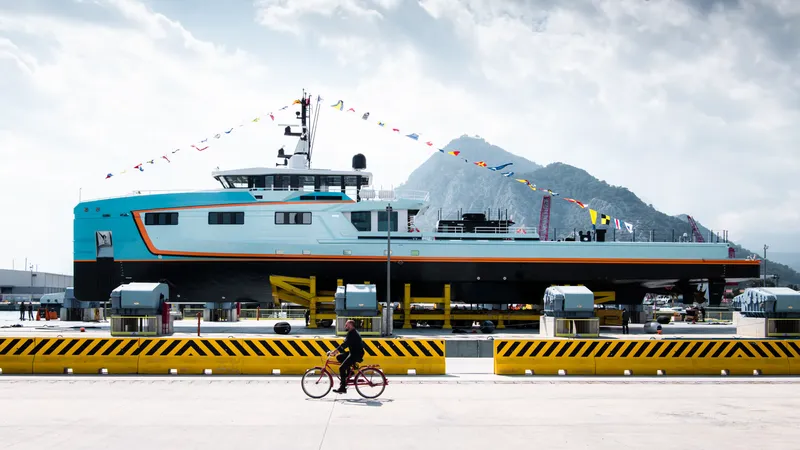Superyachts , the large luxury private vessels operated by professional crew for exclusive owners - are diverse in type and size (as indicated by the "super" prefix). The range is currently between approximately 25 meters and 170 meters, and larger vessels are being built each year.
Introduction
A large number of yachts in the 30-60 meter size range are intended for use by the owner with occasional guests, and are effectively a means of private luxury travel. At the other end of the spectrum, some "miniature cruise ships" in excess of 90 meters are intended for charter use, carrying passengers for high-end eco-tourism. These significant differences in purpose, and the effect on the nature and scale of on-board activities, are essential in understanding the yachting industry's environmental issues. The majority of the world's superyachts are found in the Mediterranean and Caribbean regions, areas valued for their unspoilt natural beauty and marine biodiversity. Many coastal or island nations with marine tourism industries would like to attract visiting yachts because they bring high-spending tourists, however this is accompanied by concerns about social and environmental carrying capacity. High-spending tourists are often seen as desirable, yet mass quantities of a lower quality tourist may lead to degradation of the destination and loss of the high-end market. This is particularly relevant to the superyacht industry where the vessel itself is a very costly and visible consumption of marine tourism. The desire to maintain high quality tourism offerings in areas such as the Mediterranean raises questions about the scale and type of yachting activity that would be most beneficial to a destination.

Overview of Superyachts
This guide will refer frequently to the typical superyacht and its operational methods both because they are the most common platform for marine-based luxury, and due to the author's firsthand knowledge of the yachting industry. It is important to remember that superyachting is not a homogeneous entity, and that the industry is very diverse with many sectors that cater to various desires of a wide client base. This said, the general defining factors of a superyacht as mentioned above are shared by vessels that themselves can be quite different, and there is significant movement of industry participants between sectors. Therefore, even a guide focused on typical superyachts can provide useful information for those involved in yachting in a variety of capacities.
The term "superyacht" is inherently associated with the concept of luxury, embodying indulgence and opulence at sea. Superyachts have no universal definition, as the very term implies the pinnacle of the private boat-owning experience. It is generally defined by its length, and can be a motor yacht or sailboat, with the most common being a motor yacht. Defining length is sometimes problematic, however, the terms "yacht" and "superyacht" are often more of a state of mind, with influential owners of mid-size vessels referring to their boat as a yacht in an attempt to associate with the greater luxury enjoyed by superyacht owners. In general, the superyacht is a transient moving platform, providing a level of luxury that is intended to and often successfully transcends that of exclusive shore-side establishments and holiday homes. This luxury is provided by a high standard of living onboard, privacy for the owner and guests, and a personalized, round-the-clock service.
Importance of Studying their Environmental Impact
Marine conservation is an under-researched field, but the damage to the environment and subsequent economic loss can be assessed by comparing the value of an area or species in its current state to its value in a hypothetical undamaged state. Economic valuation of damage to marine ecosystems has been usefully employed in a broad range of contexts, from the Exxon Valdez oil spill to the destruction of reef areas by blast and cyanide fishing. High-profile court cases have resulted in substantial fines being earmarked for the restoration of marine ecosystems that have suffered damage from negligent or deliberate human action. Economic evidence showing that the superyacht industry is causing damage to particularly valuable marine environments may provide resource managers and environmental NGOs with a strong case for legal action or new policy development targeting the yachting industry.
Furthermore, evidence that the superyacht industry is contributing significantly to the degradation of particularly sensitive marine environments such as sea-grass beds, coral reefs, or areas of high biodiversity could provide leverage for increased regulation and enforcement of marine conservation in areas that are currently being exploited by the superyacht tourism industry.
The world's super-richest individuals release more than 8 million tons of carbon from their superyachts each year. This is the same as the entire annual carbon emissions of the entire country of Bangladesh. These superyachts are generally defined as luxury yachts over 24 meters in length that have no commercial purpose. Ownership of a superyacht confers a prime form of membership into the 'Billionaire's club'. Researching the environmental impact of the superyacht industry is therefore crucially significant. This is because providing evidence that the superyacht industry has a greater impact per person or distance traveled than other forms of sea transport or tourism would suggest that efforts to mitigate the climate change impact of the wider shipping and aviation industries should include specific policies targeted toward superyachts.
Environmental Impact of Superyachts
The use of a superyacht has a multitude of environmental effects and many of them are air and water pollutants. A superyacht consumes a vast amount of fuel, at 200L per hour, for example, and therefore has a major impact in terms of air pollution and global climate change. The exhaust from the fuel used in diesel engines is laden with high amounts of sulphur and is a major source of air pollution. This emission is very harmful to human health and is known to cause respiratory diseases. The primary products of diesel fuel combustion are carbon dioxide, and in the case of high engine speeds and loads, carbon soot. Both have been identified as greenhouse gases, that contribute to global climate change. Both the substance of soot and the CO2 are directly related to the amount of fuel consumed. With no regulatory limits on carbon dioxide emissions for marine engines, and with global fuel consumption by yachts on constant increase, superyachts continue to exacerbate global climate change. Marine engines also release emissions of volatile organic compounds and nitrogen oxides, and when emitted in close proximity to populated shorelines, can result in formation of ground level ozone. In the Mediterranean this is a particular cause of concern due to the fact that the region is considered a 'sensitive area' as defined under the MARPOL convention. Ground level ozone has been shown to have detrimental effects on the health of those residing in coastal areas and can damage crops and forests. High levels of carbon monoxide are also released by marine engines it to date has adverse effects on both human health and on the atmosphere, disrupting the balance of hydroxyl radicals and methane. This build up of carbon monoxide has toxic effects on marine life due to the fact that it decreases the amount of oxygen in the blood of aquatic organisms. A study conducted by the US EPA found high levels of carbon monoxide in harbour areas, stating that yachts were most likely the cause, posing a risk to both human and environmental health.
The manufacturing of a superyacht (over 24m) can be very energy intensive and harmful to the environment. The yacht industry is continually growing, and with that comes an increase in the amount of yachts being built. The energy requirements for building a yacht have many environmental effects. Fibreglass, a commonly used material in building yachts, has a very high energy requirement for production and releases many pollutants, some of which are known to be very harmful to human health. The polishing and painting of a yacht also releases a large amount of pollutants into the air. Studies have shown that during this process the solvent can make up to 60 percent of the paint's volume. Approximately 50% of this solvent is released into the atmosphere. The solvents used in paints are released into the atmosphere as volatile organic compounds (VOCs). These have many detrimental effects on the environment and human health. Completion of the yacht is often done so in shipyards near coastal areas. This can have many negative effects as the hydrocarbon emissions from the shipyard can run off into the water and cause pollution. All these factors combined result in the manufacturing process of a superyacht being very harmful to the environment.

Carbon Emissions and Air Pollution
Air pollution in ports from superyachts stems from the engine activity and from the movement of tenders and support craft. The competitor with the main impact on air quality is the large container and cruise shipping industry because it uses poor quality fuel and emits a higher level of pollutants. Yachting will continue to experience pressure from governing bodies to reduce its impact on both local quality and global levels of air purity. Although, with predictions of an increase in size of the industry and the absence of restrictive global control measures for small craft, it will likely become a more significant contributor to the air pollution of popular ports and anchorages around the world.
Carbon dioxide (CO2) emissions from superyachts are influenced by the engine power and load, as well as the fuel type. Four-stroke marine diesel engines are the most common form of propulsion in large yachts and are more fuel-efficient than two-stroke engines. However, the lower particulate emissions associated with two-stroke engines create a balance between the two types. Compared to automotive vehicles, marine engines emit higher amounts of CO2 due to the low quality of fuel. When at anchor, yachts will often use a generator for electricity, and this can create a higher level of emissions per unit of energy produced than land-based stations. Even though there is no conclusive evidence on the exact contribution from yachting, the global share of yachting to CO2 and sulfur emissions is estimated at around 4% and 8% respectively.
Discharge of Wastewater and Sewage
Compared with the other methods of waste disposal, the impacts of discharge from marine sanitation devices (MSDs) and direct from the toilet are much greater. When MSD and holding tank discharge occurs beyond the direct vicinity of the coast, the waste is usually heavily diluted and has minimal impact. Only in rare cases of poor MSD maintenance will there be significant pollution from this method of discharge. Any discharge of raw and poorly treated sewage into the sea has serious impacts on water quality and marine life. In the cases of confined or poorly flushed bays, the impacts can be chronic and prolonged. High inputs of nutrients can lead to algal blooms and oxygen depletion from decomposition of organic matter. This can lead to reductions in the biodiversity of an ecosystem and the fish stocks it supports.
Plume discharge for black water from marine sanitation devices is only allowed in certain Caribbean nations. In the vast majority of Caribbean waters (EEZ and territorial seas) and all US waters (state, EEZ and territorial seas), discharge of black water is prohibited. Since 2012, even overboard discharge from type 1 MSD in US waters is illegal. In the EU, it is illegal to discharge untreated sewage from a yacht into the sea, within a 12-mile limit of the coast or into a freshwater or brackish waterway.
Most bilge water is discharged in a jet plume, usually underway. This method ensures that the waste is left well behind the yacht. However, while at anchor, many yacht operators adopt an easy but seriously damaging method of discharging the contents of their holding tanks.
Noise and Light Pollution
Countries such as the UK, United States, and the French Riviera have seen an increase in regulation due to the noise generated from superyachts (small luxury cruisers). Ships are predominantly built using steel and have a range of 3,000 to 5,000 nautical miles, cruising at 12 to 24 knots. The yachts' machinery and equipment usually cause a high level of noise spreading over a wide area. Large vessels are considered to be a potentially significant source of low and mid-frequency noise in many areas of the world's oceans. Engine and propeller noise, as well as onboard construction or maintenance, can all result in the introduction of noise into the marine environment. For marine species that communicate and orientate using sound, the increase in background noise from marine vessels is a concern. Changes or significant additions to underwater noise that can mask biologically important sounds have the potential to affect the distribution, number, and behavior of marine mammals and can have long-term effects on their populations. The result of these effects can be to reduce the number of marine mammals in an area over a prolonged period and, in the case of some locations, a change in species abundance and diversity.
Mitigation Strategies
Currently, the most fruitful work being done is that of the SEAREG (Search of Alternative for Reduction of Emissions from Gasoline) projects sponsored by the European Union. The SEAREG III project focuses on emission reduction from two and four-stroke outboard engines and the development of a low emission 4-stroke personal watercraft. This project has the very specific aim of developing technologies and/or fuels, which can be quickly implemented into production following the conclusion of the project. This is a key issue that has hindered emissions improvements in the past; many successful research programs have had little impact on actual engine technology.
A superyacht is a luxury item, and luxury items are often the test bed for new ideas. As discussed earlier, the yachting industry has been significantly overhauled in terms of efficiency in recent years. The pollution that they cause is an unintended consequence of how successful this development has been. Therefore, there has been relatively little focus by engineers on the specific issue of emissions. This means that there are currently no emissions regulations in force for marine engines. As a result, engine technology lags behind that of the automotive industry. This is particularly true for high-speed marine engines.
Green Technologies for Superyachts
Simple steps to reduce fuel consumption include the reduction of hull resistance through improved hull design and regular cleaning to remove marine growth and biofouling. A move to alternative fuels such as low-sulfur diesel and biodiesels can provide some reduction in emissions, although the global availability of some of these fuels may be limited and can result in unwanted fuel system compatibility issues. Renewable energy sources such as solar and wind power are becoming increasingly efficient and cost-effective and can significantly reduce the load on the main engines for electrical generation. This can be seen on a number of current yachts which utilize wind and solar power for battery charging, air-conditioning systems, and hotel loads. The use of a more efficient power generation source such as a fuel cell and the use of hybrid diesel-electric propulsion is an area of increasing development within the yachting industry and can significantly reduce emissions and fuel consumption.
A range of technical options and strategies can contribute to the development of a green yacht. These range from straightforward measures to reduce fuel consumption and use of non-fossil fuel energy sources, to more complex structural modifications and a holistic design approach that integrates a complete energy-efficient system into the vessel. For the most part, these options are relatively expensive to implement and may be unrealistic for older vessels to achieve.
Regulations and Policies
The 1998 EC Directive, which legislates for the protection of the environment from European shipping, covers many aspects of pollution prevention, but the most relevant part is the regulation on sulphur content of marine fuel. This directive is set to implement a restriction on fuel used in all types of ships in SECAs to have a sulphur content of no more than 0.10% m/m. This is a significant reduction from the global limit for fuel oil used in ships of 3.5% mass by mass, which is defined in Annex VI of the MARPOL protocol, and is due to be enforced by 1st January 2015. This is an important piece of legislation for the superyacht industry. Not only is the limit very low, but the price of low sulphur fuel is currently much higher than regular fuel. And as there is a limited supply of low sulphur fuel and the absence of fuel storage and development at many ports, the implications are that fuel scarcity for ships using marine gas oil and the cost and practicality of refuelling may be an issue. The other significant factor is fuel derived from gas has no more than 0.10% m/m, which must be sulphur-free. Yachts are possible candidates for the use of this fuel in the future as the limitations regarding availability are improved.
Regulations and policies that apply to superyachts are a mix of international conventions, national laws in the flag states where yachts are registered, and rules applied by the private agencies. As an EU funded research paper, the focus is mainly on rules that apply to European waters and the implementation of international conventions by Europe's regional government. The two key pieces of international legislation that are directly relevant to environmental protection from shipping are the 1997 MARPOL protocol and the 1998 EC Directive. The MARPOL protocol is an extension of the original legislation adopted in 1973 and updated in 1978/1979. It is an international convention designed to minimize pollution of the seas, including prevention of atmospheric pollution by ships through the reduction of sulphur oxides and nitrogen oxides whose derivatives are bad for human health and the environment. Regulations on engines installed or converted before 1 January 2000 are a limit of 9.0 g/kWh for oxides of nitrogen and 4.5 g/kWh for oxides of sulfur. Engines installed or converted on or after this date have tighter restrictions at 7.0 g/kWh for oxides of nitrogen and 1.5 g/kWh for oxides of sulfur. Offsetting these restrictions is the allowance to burn heavy fuel oil (HFO) which has higher energy content than diesel and is known for only partial combustion resulting in high emission of particulate matter. It was seen as an environmental step back which led to a 2008 revision of regulation 14 with the addition of Annex VI.
Sustainable Practices for Superyacht Owners and Crew
The simple ways to reduce environmental impact are the reduction of water and energy consumption. This can be achieved using the same methods a household would: turning off appliances when they are not in use, fixing leaks, using energy-efficient appliances, and using timers and sensors to run appliances during off-peak periods. Ultimately, the largest impact will be from the installation of renewable energy systems, in particular solar power. Even though the initial cost is high, it will reduce the environmental impact and running costs of a yacht in the long term.
Acknowledging that the superyacht industry relies on finite natural resources, a variety of sources have offered guidelines that pertain to the operation of superyachts, suggesting the best methods of reducing the environmental impact. The World Wide Fund for Nature (WWF), guided by member superyacht builders and operators, has compiled a comprehensive set of easy, more difficult and long-term suggestions which would make the greatest impact if they were widely adopted. The first step is to raise awareness of the issue since environmental protection is not a main priority of many yachters. As an expectedly higher educated and aware class of yacht operators, it is vastly important to explore and understand the environmental impact of superyachts. By doing so, it will enable one to make informed decisions on how to reduce any negative effects. By maintaining a high awareness, one can continuously re-evaluate the amount of impact caused, which is a useful tool to monitor progress in the future.
Conclusion
The possible impacts of the industry are not yet known and are still up for speculation. Although many of the effects will be negative and the sum of these effects may be quite severe, there is still hope for our marine environment. With further research and increased environmental awareness, there is a chance we can limit the severity of these effects and provide long-term solutions to prevent further damage. This is not an easy task and it will require collaboration between the many disciplines that are involved with the marine environment, but it is possible with further dedication and support from those who care about the environment.
During this essay, we have discussed a wide variety of aspects surrounding the superyacht industry from its growth to its potential effects and possible solutions to those effects. To begin, the industry has grown significantly in a short period of time, shown by the increasing size of the yachts being produced and the total number of yachts out on the water. This expansion has already brought more attention to the market and has sparked the interest of many individuals of varying backgrounds. The majority of these individuals would like to profit from the industry, but the interest has also created a demand for data on the industry's current situation and its possible effects on the environment. This increased demand was a large inspiration for this paper, and the data we have been able to present provides a solid foundation for the topic at hand.












